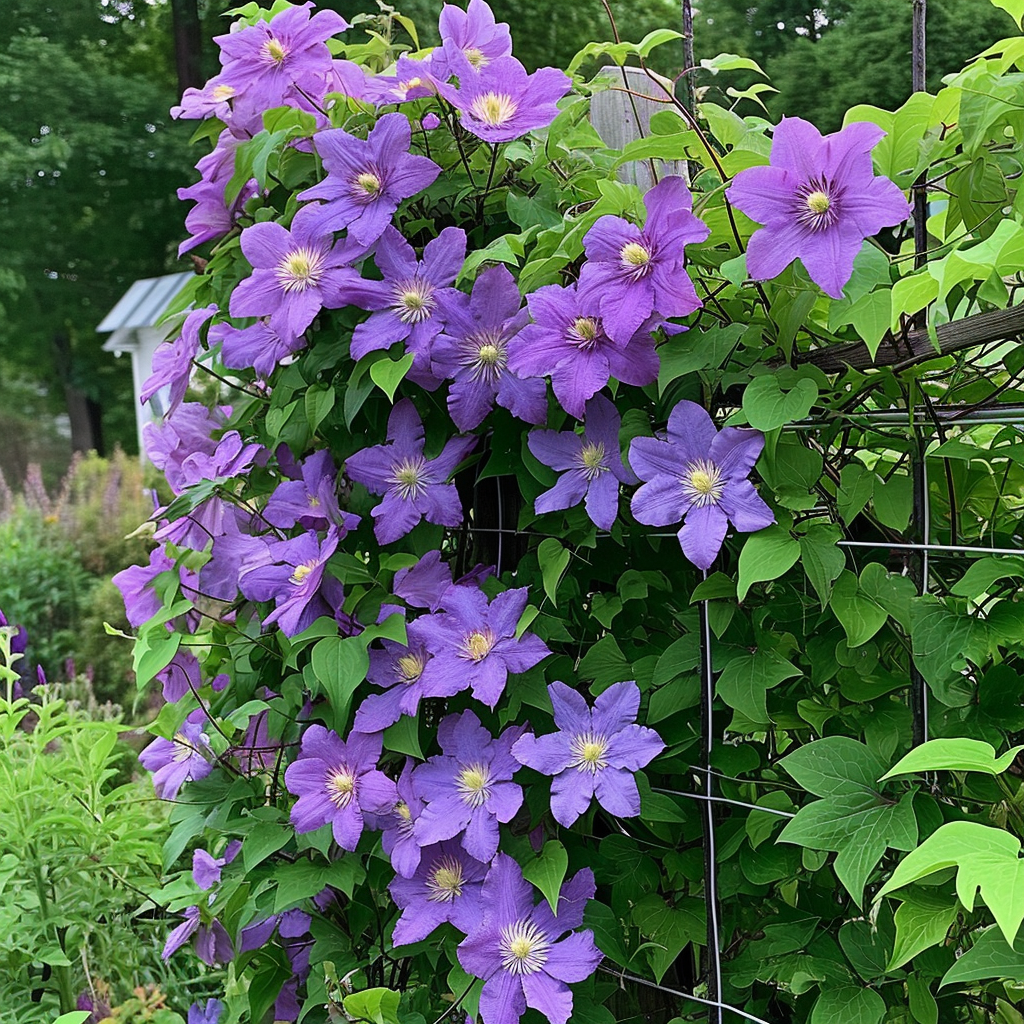Growing clematis plants can add a touch of beauty and elegance to any garden. Clematis, known for their vibrant flowers and versatile climbing habit, can transform fences, trellises, and walls into stunning floral displays. Here’s a detailed guide on how to grow clematis plants:
1. Choosing the Right Variety
- Research Varieties: Clematis comes in a wide range of species and hybrids, each with different flower colors, sizes, and blooming seasons. Popular types include Clematis montana (spring bloomer) and Clematis viticella (summer bloomer).


- Consider Climate: Choose a variety that suits your local climate. Some are more cold-hardy, while others prefer milder temperatures.
2. Planting
- Best Time: Plant clematis in spring or early fall when the soil is warm and moist.
- Location: Choose a spot with at least 6 hours of sun per day. Clematis thrives in well-drained soil with a neutral to slightly alkaline pH.
- Planting Depth: Dig a hole twice the width and the same depth as the root ball. Position the plant so that the top of the root ball is 2-3 inches below the soil surface. This encourages extra shoots to form.
3. Support and Training
- Support Structures: Clematis are climbers, so provide a trellis, fence, or arch for support. Ensure the structure is sturdy enough to handle the plant’s weight as it grows.
- Training Clematis: Gently tie the stems to the support with soft twine or strips of fabric. As the plant grows, continue to guide and secure new growth.
4. Watering and Feeding
- Regular Watering: Keep the soil consistently moist, especially during the first growing season. Avoid over-watering, which can lead to root rot.
- Fertilizing: Use a balanced, slow-release fertilizer in early spring. A monthly application of a liquid fertilizer during the growing season can also promote healthier blooms.
5. Pruning
- Understand Pruning Groups: Clematis is categorized into three pruning groups based on blooming time and old versus new wood flowering.
- Group 1: Early bloomers that flower on old wood.
- Group 2: Large-flowered hybrids that bloom twice, on old and new wood.
- Group 3: Summer and fall bloomers that flower on new wood.
- Pruning Technique: Prune according to the group. For Group 1, lightly prune after flowering. For Group 2, prune in late winter or early spring and again after the first flush of flowers. For Group 3, prune hard in late winter.
6. Mulching and Soil Care
- Mulching: Apply a layer of organic mulch around the base to maintain moisture and regulate soil temperature.
- Soil Maintenance: Check the pH periodically and adjust if necessary. Clematis prefers a slightly alkaline soil.

7. Pest and Disease Management
- Common Issues: Clematis can be susceptible to fungal diseases like clematis wilt and pests such as aphids.
- Preventative Measures: Ensure good air circulation, avoid wetting the foliage, and use appropriate fungicides or insecticides when necessary.
8. Winter Care
- Insulation: In colder climates, protect the base of the plant with extra mulch or a burlap wrap.
- Pruning: Depending on the variety, some additional pruning may be beneficial before winter sets in.

Conclusion
With the right care and conditions, clematis plants can be a spectacular addition to any garden. Regular maintenance, proper pruning, and attention to their growing needs will reward you with a stunning display of blooms year after year. Remember, patience is key – clematis can take a few years to establish and reach their full flowering potential.